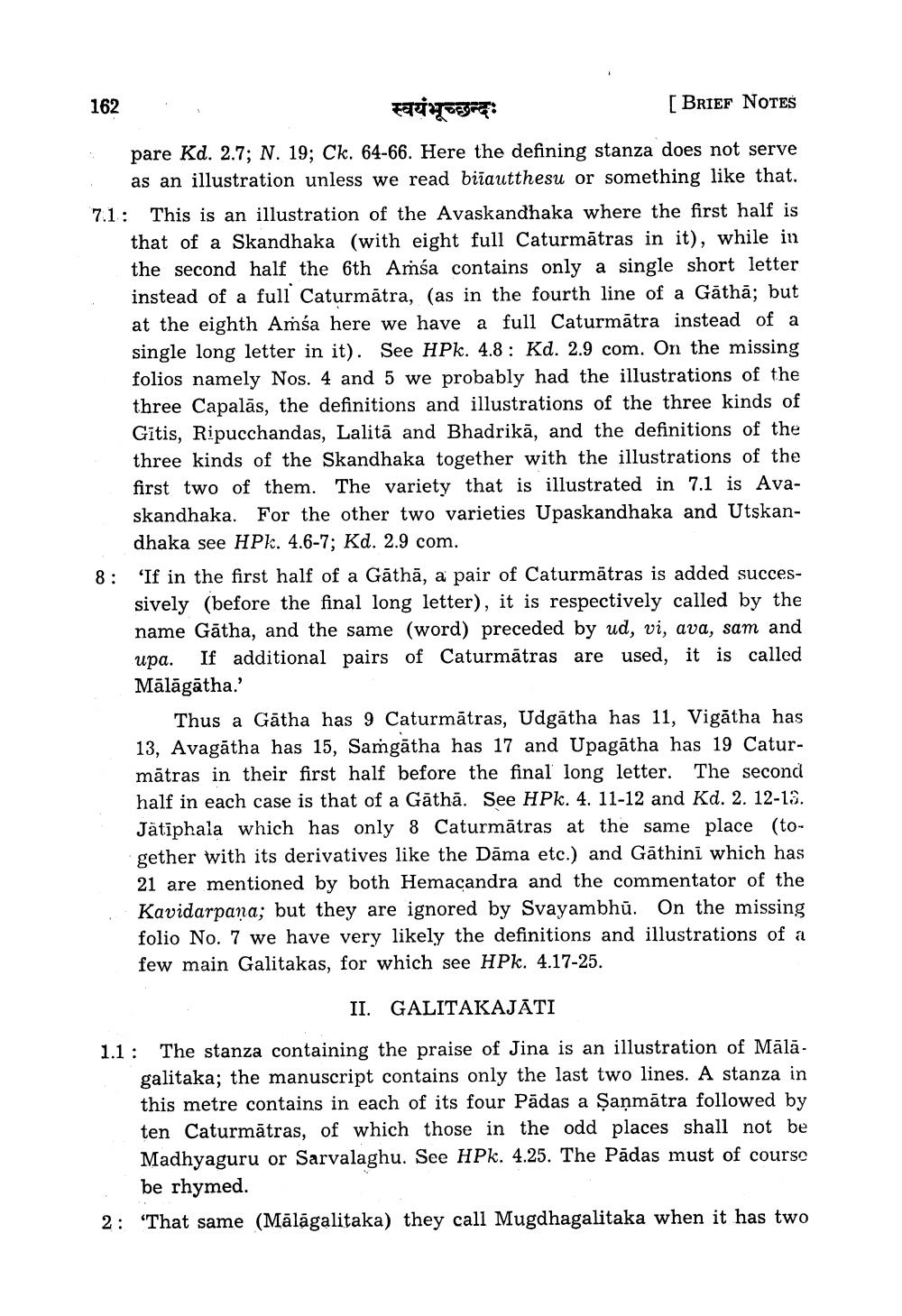________________
162
स्वयंभूच्छन्दः
[BRIEF NOTES
pare Kd. 2.7; N. 19; Ck. 64-66. Here the defining stanza does not serve
as an illustration unless we read bisautthesu or something like that. 7.1: This is an illustration of the Avaskandhaka where the first half is
that of a Skandhaka (with eight full Caturmātras in it), while in the second half the 6th Amía contains only a single short letter instead of a full Caturmātra, (as in the fourth line of a Găthā; but at the eighth Amśa here we have a full Caturmātra instead of a single long letter in it). See HPk. 4.8: Kd. 2.9 com. On the missing folios namely Nos. 4 and 5 we probably had the illustrations of the three Capalās, the definitions and illustrations of the three kinds of Gītis, Ripucchandas, Lalitā and Bhadrikā, and the definitions of the three kinds of the Skandhaka together with the illustrations of the first two of them. The variety that is illustrated in 7.1 is Avaskandhaka. For the other two varieties Upaskandhaka and Utskan
dhaka see HPk. 4.6-7; Kd. 2.9 com. 8: 'If in the first half of a Gāthā, a pair of Caturmātras is added succes
sively (before the final long letter), it is respectively called by the name Gātha, and the same (word) preceded by ud, vi, ava, sam and upa. If additional pairs of Caturmätras are used, it is called Mālāgātha.'
Thus a Gātha has 9 Caturmātras, Udgātha has 11, Vigătha has 13, Avagātha has 15, Samgātha has 17 and Upagātha has 19 Caturmātras in their first half before the final long letter. The second half in each case is that of a Gāthā. See HPk. 4. 11-12 and Kd. 2. 12-13. Jätiphala which has only 8 Caturmātras at the same place (together with its derivatives like the Dāma etc.) and Gāthini which has 21 are mentioned by both Hemacandra and the commentator of the Kavidarpaņa; but they are ignored by Svayambhū. On the missing folio No. 7 we have very likely the definitions and illustrations of a few main Galitakas, for which see HPk. 4.17-25.
II. GALITAKAJATI
1.1: The stanza containing the praise of Jina is an illustration of Mālā -
galitaka; the manuscript contains only the last two lines. A stanza in this metre contains in each of its four Padas a Sanmātra followed by ten Caturmātras, of which those in the odd places shall not be Madhyaguru or Sarvalaghu. See HPk. 4.25. The Pādas must of course
be rhymed. 2: 'That same (Mālāgalitaka) they call Mugdhagalitaka when it has two




